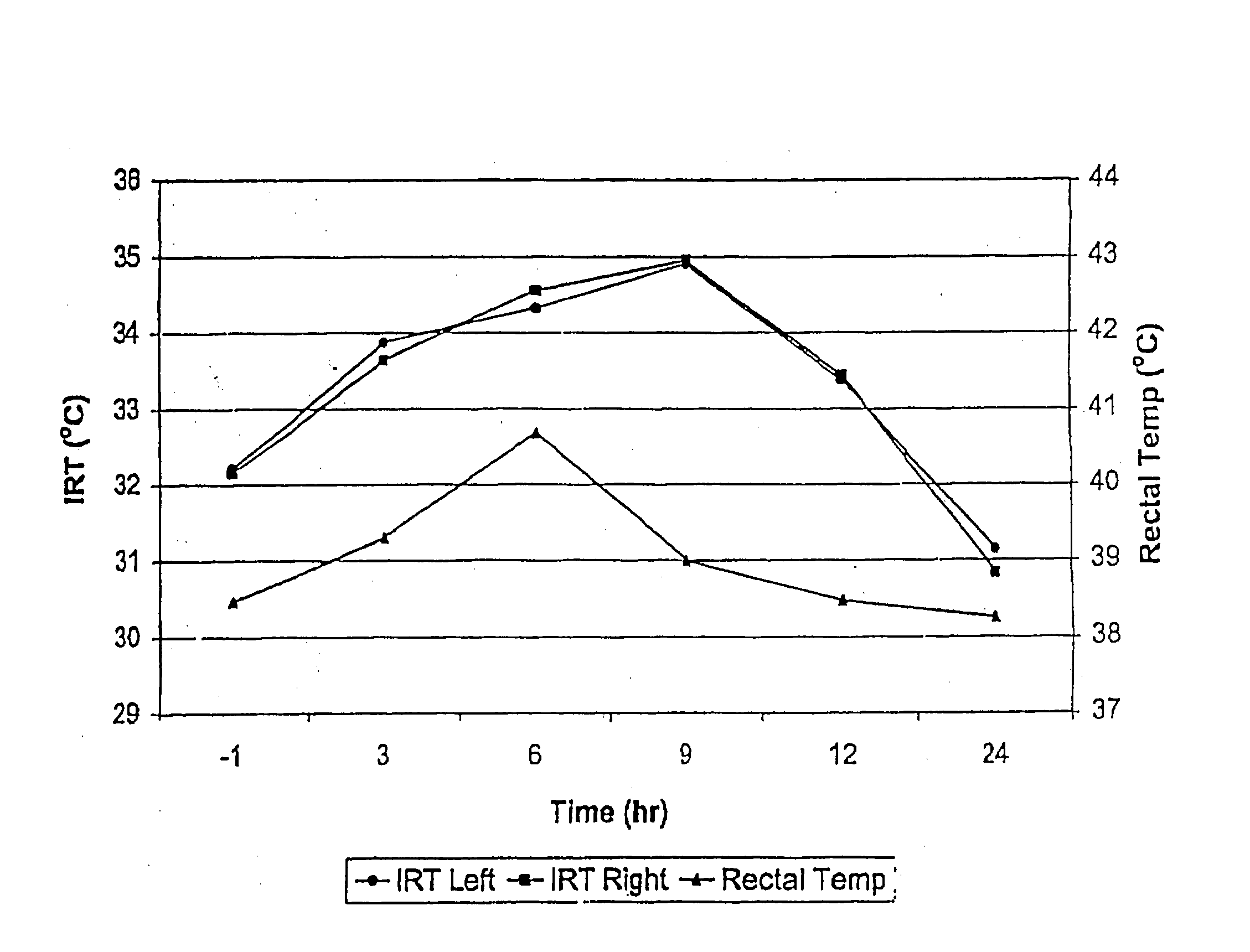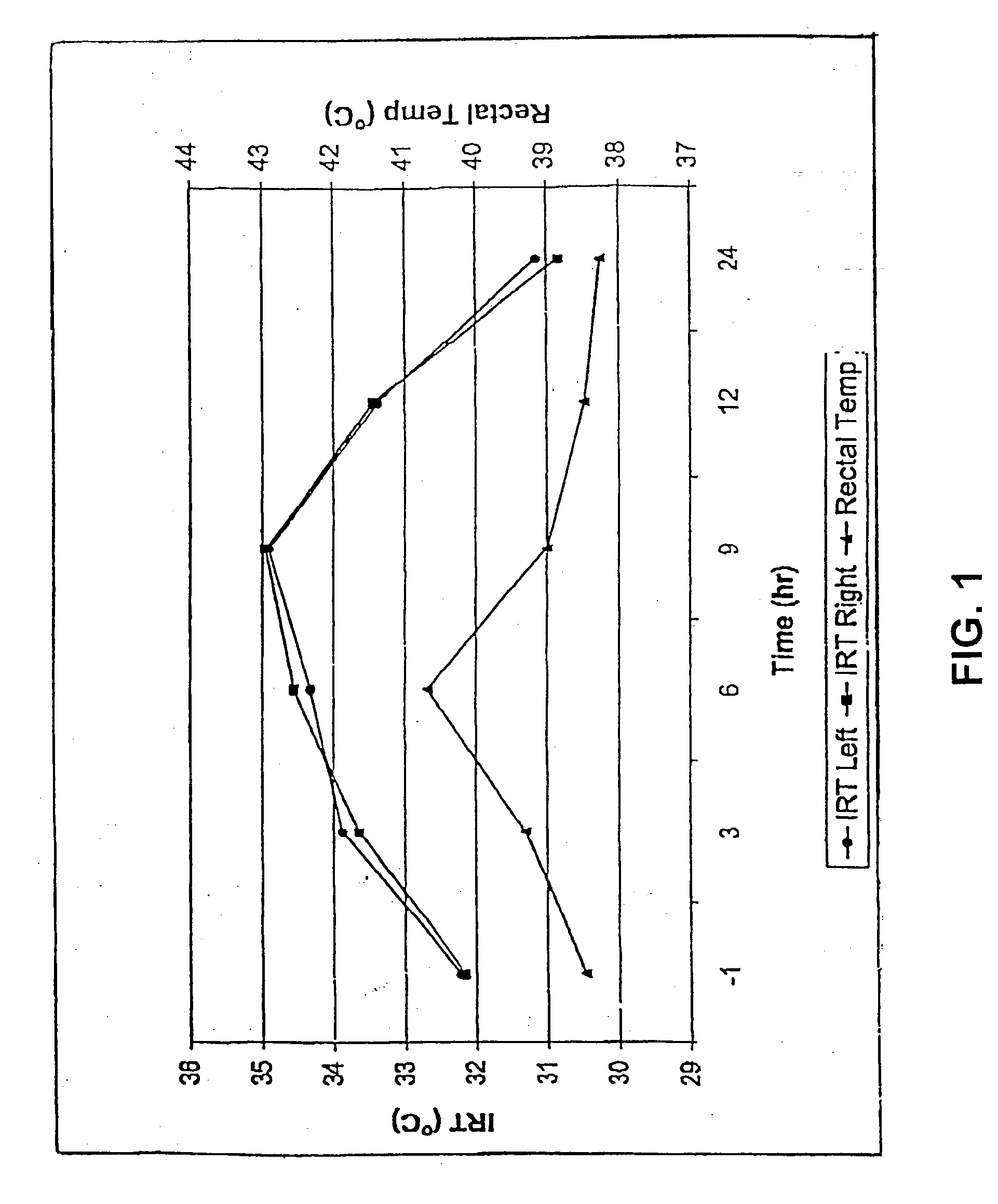Early detection of inflammation and infection using infrared thermography
a technology of infrared thermography and inflammation, applied in the field of infrared thermography imaging in animals, can solve the problems of inability to detect inflammation, redness, warmth (altered heat pattern), pus formation, and swelling of normal tissues, and achieves the effects of reducing the number of infrared thermography images, reducing the detection cost, and improving the detection efficiency
- Summary
- Abstract
- Description
- Claims
- Application Information
AI Technical Summary
Benefits of technology
Problems solved by technology
Method used
Image
Examples
Embodiment Construction
[0031] The present invention relates to the use of infrared thermography for the early or subclinical detection of inflammation in animals. The present invention also relates to the use of infrared thermography in the diagnosis of diseases or disorders that induce inflammation and / or induce the catabolism of tissues. The present invention provides methods for detecting inflammation of an anatomical structure of an animal, preferably a mammal and more preferably a non-human animal. The present invention further provides methods for detecting infection of an anatomical structure of an animal, preferably a mammal. In one embodiment, the present invention provides methods for detecting infection of an anatomical structure in a non-human animal. In yet another embodiment, the present invention provides methods for detecting infection in humans. The term "anatomical structure" used herein refers to any definable area of an animal, preferably a tissue or a joint of an animal, that radiates...
PUM
 Login to View More
Login to View More Abstract
Description
Claims
Application Information
 Login to View More
Login to View More - Generate Ideas
- Intellectual Property
- Life Sciences
- Materials
- Tech Scout
- Unparalleled Data Quality
- Higher Quality Content
- 60% Fewer Hallucinations
Browse by: Latest US Patents, China's latest patents, Technical Efficacy Thesaurus, Application Domain, Technology Topic, Popular Technical Reports.
© 2025 PatSnap. All rights reserved.Legal|Privacy policy|Modern Slavery Act Transparency Statement|Sitemap|About US| Contact US: help@patsnap.com



